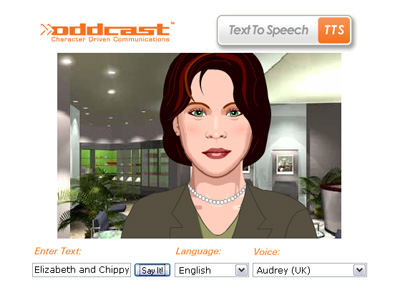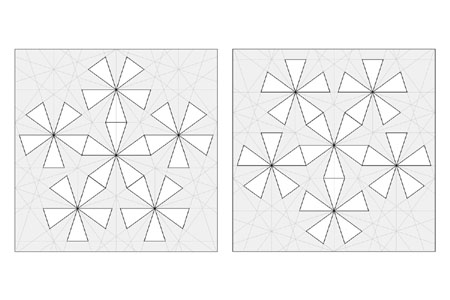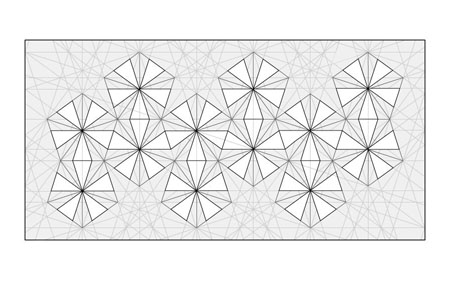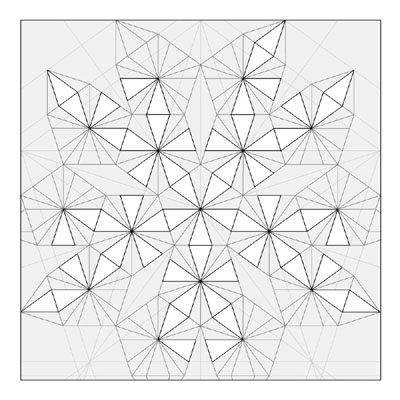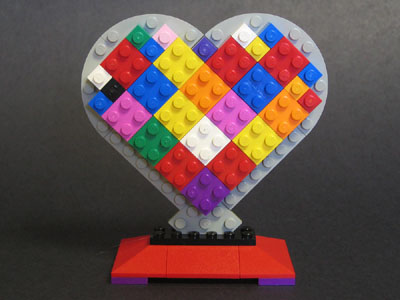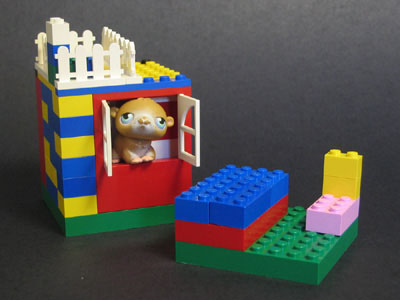As long as I can remember I’ve liked geometry.
I’ve been doing origami polyhedra for quite some time, and you can see some of the ones I’ve designed on my Origami Page. My approach is mainly from single sheet, in contrast the more common modular approach. When I first started, I thought that it was new, largely unexplored territory, and I could do something really interesting. Soon I could see it was a rich area of endeavor, but also very challenging. Around that time I met John Montroll, and he was way ahead of me down this path. In fact he was about to release a book on origami polyhedra, and was working on a second one. This was great for me, because he was eager to have people test his diagrams, and was very generous with his ideas, and I learned a lot from our discussions. On the other hand, he pretty much had the basics covered and then some, like several versions of the platonic solids, and some prisms and Archimedean solids and other shapes. So I had to go a good deal further to get into original territory.
One of my all-time favorite shapes has always been the Stellated Dodecahedron, which is the 3-D analog of the pentagram. (Which, BTW is the 4D analog of the Tetrahedron, but since no one folds 4-D origami, that’s a bit outside the scope of this discussion.) I’ve designed and attempted to fold various versions of this shape over time.
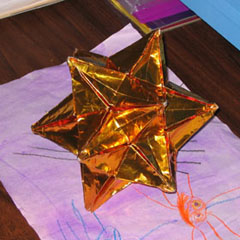
Here is a design from a single square. I actually succeeded in folding one, from a giant (24″) sheet of foil paper. It worked, but I would not call the result great in terms of the level of craft. I tried another from a smaller (14″ or so) piece of thickish (for origami) paper, but never completed it. The problem is that once you get towards the end, there are many flaps of extra paper to deal with, and the model wants to spring apart. This, combined with the limitation of having only two hands, makes it very tricky to close. I may give this design another try, but I’ve been exploring other avenues.
Last summer at the OUSA Annual Convention I was playing around with ideas for this shape again, and it occurred to me to try it from a 2:1 rectangle. It was still a single sheet, but provide more edge relative to the paper’s area, so it ought to reduce the problem of extra flaps of paper to hide. I have a design for a 2:1 icosahedron which is really efficient and easy to fold, and it didn’t take too long to come up with a regular dodecahedron, which is the base for the stellated version. When I went ahead and folded it, it realized it was so efficient that there was not enough paper to make a lock, so I’d need to go back and modify my design be setting it into a slightly larger rectangle. So I tried again. Still making the model close was a bit of a challenge. Doable, but requiring some effort.
Then over Christmas vacation, I finally had some origami time again, and this time I went for a version made from 2 squares, each of which comprise half the finished model. This is much easier to fold because you can reach inside each half as you’re making it, and the leftover flaps of paper become tabs that fit into the opposite half, nicely solving the problem of what to do with the leftover bits. At the end, the two halves lock together tightly and securely. The resulting model is quite attractive, because it’s much easier not to crush it as you’re putting it together. The examples below are made from (2 sheets each of) 6″ foil paper and 8.5″ photocopy paper.
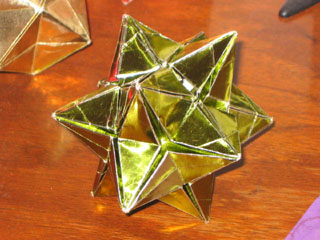
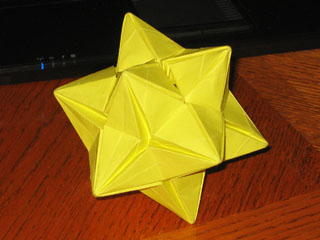
Which brings up the question: Origami purists like to only work for a single square sheet. Which is more of a “cheatâ€: to use two squares or one rectangle?
Coming Soon: crease patterns for the 3 methods for Stellated Dodecahedra.
